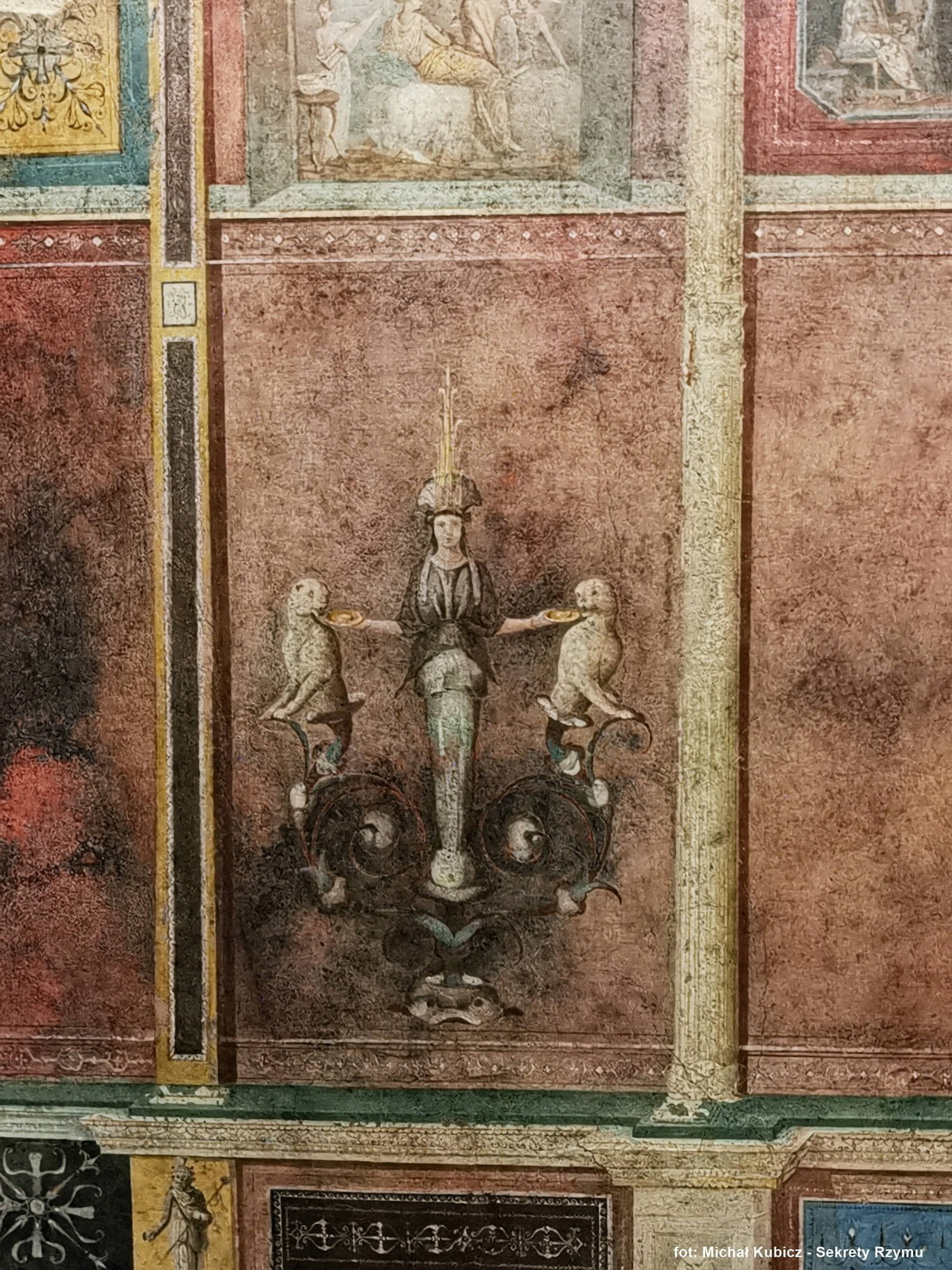In 1897, in Rome, on the right bank of the Tiber, the remains of a magnificent Roman villa were found. As it soon turned out, its perfect condition and decorations surpassed the beauty of the already known houses in Pompeii, or Herculaneum.
The remains of the villa were carefully collected, reconstructed and can now be seen at the Palazzo Massimo alle Terme Museum, just outside Termini Station. From the moment it was discovered, the villa’s researchers were intrigued as to who might own it. H.G. Beyen maintains that it may have belonged to Marcus Agrippa, a friend and, as we would say today, “Admiral” of Octavian Augustus, and Julia, daughter of August. Such information will also be available to all visitors to the museum. This is to be confirmed by the elements of decorations with an Egyptian character. This in turn is to commemorate the victory of Augustus and Agrippa at Actium and the conquest of Egypt.
There is no obvious confirmation of this fact. Many famous Romans, including Julius Caesar and Pompey the Great, had their homes in this area.
There is also a dominant tradition among researchers assigning the ownership of the villa to Klodia Metelli (Clodia Metelli). While Marcus Agrippa is a well-known figure, Clody escaped us a bit from the pantheon of famous Romans and Romans. She was the daughter of Appius Claudius Pulcher, a censor. Her brother was Clodius Pulcher, a people’s tribune known for many laws in favour of the Roman “bourgeoisie”, which greatly upset the republican order of things. He changed his name from Claudius to Clodius, allowing the adoption of a plebeian family, and then Clodia also changed his name. Her sister-in-law was Fulvia, later the third wife of Mark Antony, and her husband Mucja Scevolanis, third wife of Gnaeus Pompey. One of her sisters was the wife of Lucius Licinius Lucullus and one of her nieces was the first wife of Marcus Junius Brutus.
According to contemporaries, Clodia was to be disastrous, to maintain an incestuous relationship with her own brother, and to organize orgies in her gardens on the Tiber. She was also supposed to be in love with Cicero himself, which infuriated his wife Terence. These suspicions meant that, according to ancient authors, it was Terentia who forced her husband to pursue Clodius Pulcher in connection with the Bona Dea scandal. When Clodia accused one of her friends, Marcus Celius Rufus, of poisoning her husband and many other things, Cicero in his defensive speech called her “quadrantery”, which was synonymous with the cheap prostitute. However, the clash in court did not prevent mutual friendship. Later, after the death of his daughter Tullia, Cicero approached Clodia with the intention of purchasing her gardens and building a chapel in honour of his daughter. Apparently, the poet Catullus was supposed to describe her beauty in his poems, calling her “Lesbia”.
Perhaps there is a grain of truth in the accusations against Clodia. Perhaps they are merely the result of a misunderstanding of her exuberant and liberated personality.
Anyway, when visiting the remains of Villa Farnesina, let’s imagine whose eyes could also see the wonderful paintings, and who could also walk between its walls.
- Frescoes from the so-called Agrippa’s Villa in Trastevere. Currently in the Palazzo Massimo Alle Terme Museum
- Detail of a fresco from the so-called Agrippa’s Villa in Trastevere. Currently in the Palazzo Massimo Alle Terme Museum
- Detail of another fresco from the so-called Agrippa’s Villa in Trastevere. Currently in the Palazzo Massimo Alle Terme Museum










